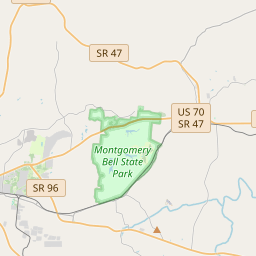The Civilian Conservation Corps
Historical marker location:






- March 31, 1933: President Franklin D. Roosevelt signs the Emergency Conservation Work (ECW) Act into law, establishing the Civilian Conservation Corps as part of his New Deal program.
- April 5, 1933: The CCC is officially launched, providing employment opportunities for unemployed young men between the ages of 18 and 25.
- 1933-1942: The CCC enrolls over 2.5 million young men from economically disadvantaged families, providing them with jobs, vocational training, and relief during the Great Depression.
Camp Life: CCC enrollees live in camps located in rural areas and work on various conservation projects across the United States. They receive food, shelter, clothing, and a small wage, with a portion of their earnings sent back home to support their families.
Conservation Projects: The CCC undertakes a wide range of conservation projects, including reforestation, erosion control, trail construction, forest fire prevention, wildlife conservation, historic site restoration, and the development of public parks.
Collaboration with Other Agencies: The CCC works in collaboration with various federal agencies, including the National Park Service, U.S. Forest Service, Bureau of Land Management, and Soil Conservation Service, to implement conservation programs and projects.
Educational and Vocational Training: In addition to their work, CCC enrollees receive educational and vocational training, such as literacy classes, courses in conservation and forestry, and technical skills development.
Military Training: During World War II, the CCC shifts its focus to providing military training for its enrollees, preparing them for military service.
- July 1, 1942: As the United States transitions into wartime efforts and the economy improves, the CCC gradually loses its significance. The program officially ends with the termination of new enrollments.
The Civilian Conservation Corps played a significant role during the Great Depression, providing employment, relief, and skills training to young men while accomplishing vital conservation work across the country. The program's legacy can still be seen today in the numerous parks, forests, and other public lands that were developed or improved through the efforts of CCC enrollees.
The Great Train Robbery of 1866, one of the most famous train robberies in American history, took place in Tennessee. A group of Confederate veterans stole $90,000 from a train traveling from Nashville to Chattanooga.
The county was officially established in 1803 and named after William Dickson, a Nashville attorney and a congressman who played a crucial role in the state's early development. Throughout the early years, Dickson County's economy was primarily centered around agriculture, with tobacco, corn, and livestock being the main crops. The construction of railroads in the mid-19th century further stimulated economic growth and encouraged trade and transportation.
During the Civil War, Dickson County faced divisions as residents aligned themselves with either the Union or the Confederacy. The Battle of Vanleer's Hill, fought in December 1864, was one of the significant engagements that took place in the area. After the war, the county experienced a period of reconstruction and recovery, with many residents turning to industry and manufacturing.
In the 20th century, Dickson County's economy diversified and modernized. The discovery of oil in the area in the 1920s led to a brief oil boom, and the establishment of industries such as textiles and plastics offered new employment opportunities for residents. Today, Dickson County enjoys a vibrant economy that encompasses a variety of industries, including healthcare, retail, and manufacturing, while still preserving its rural charm and sense of community.
Dickson County Timeline
This timeline provides a condensed summary of the historical journey of Dickson County, Tennessee.
- 1803 - Dickson County is established, named after William Dickson, a Nashville lawyer and legislator.
- 1808 - The first courthouse is built in Charlotte, the county seat of Dickson County.
- 1815 - The Cumberland Presbyterian Church is founded in Dickson County.
- 1821 - The county's first newspaper, "The Planters' Banner," is published.
- 1830 - The completion of the Memphis to Nashville Turnpike, also known as the "Natchez Trace," boosts trade and transportation in the area.
- 1861-1865 - Dickson County actively participates in the American Civil War.
- 1892 - The City of Dickson is incorporated.
- 1920s - The discovery of coal in the region leads to an economic boom.
- 1975 - The completion of Interstate 40 greatly improves transportation and accessibility to Dickson County.
- 1990s - The construction of the Renaissance Center, a cultural and educational facility, contributes to the county's growth and development.